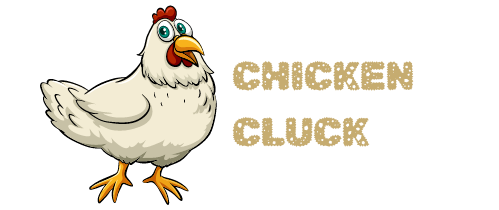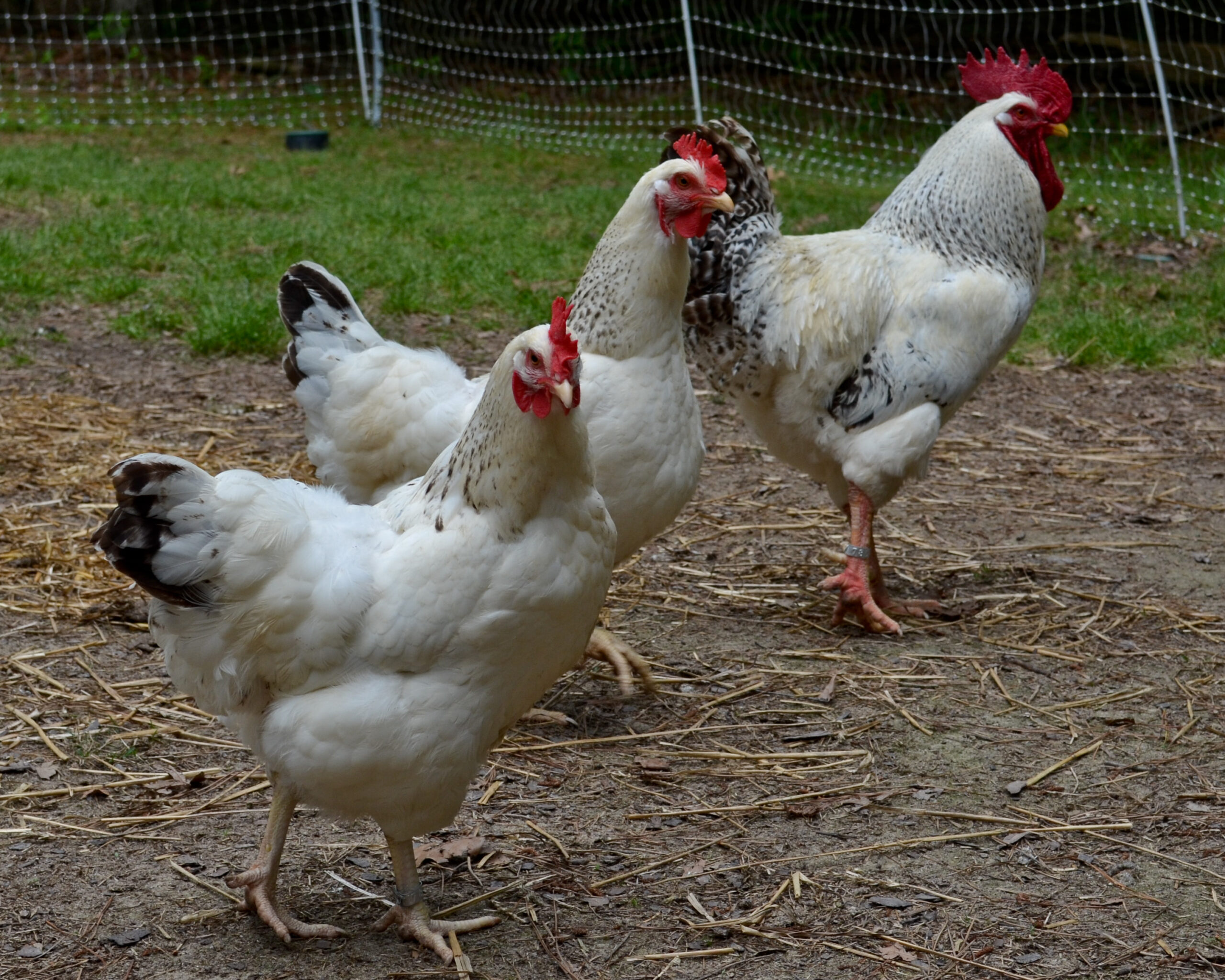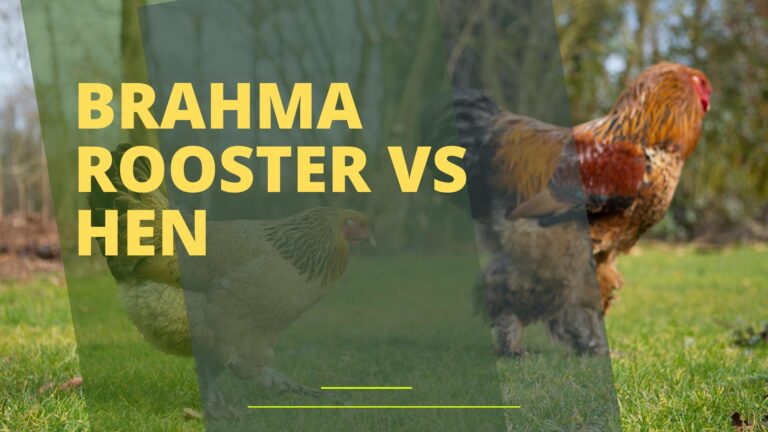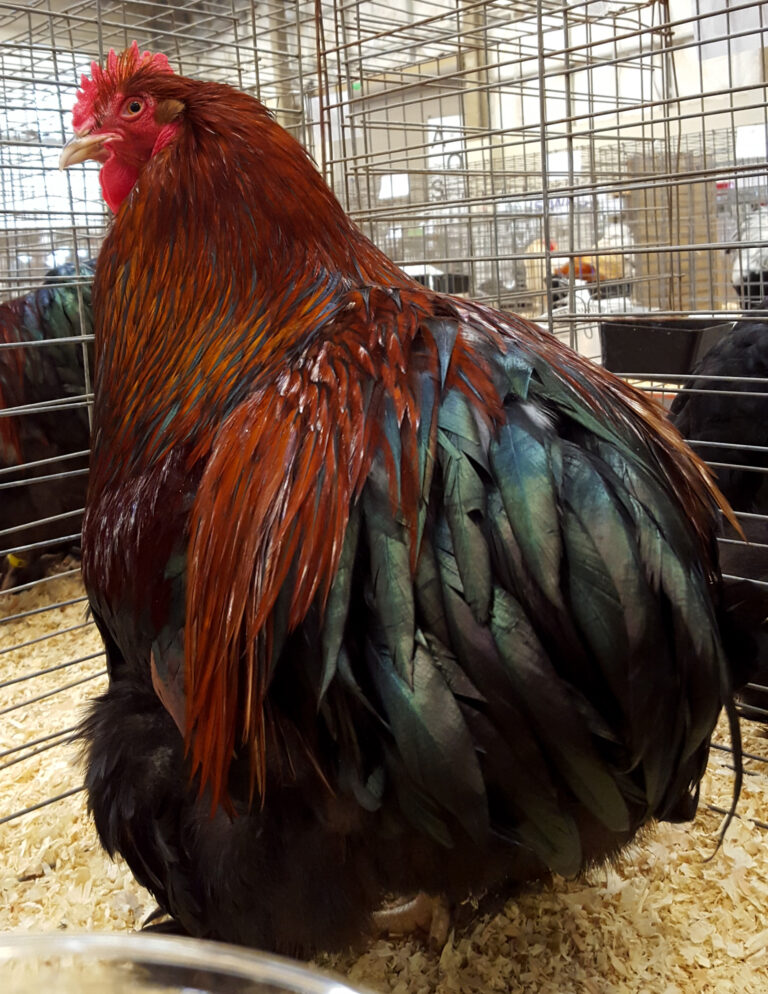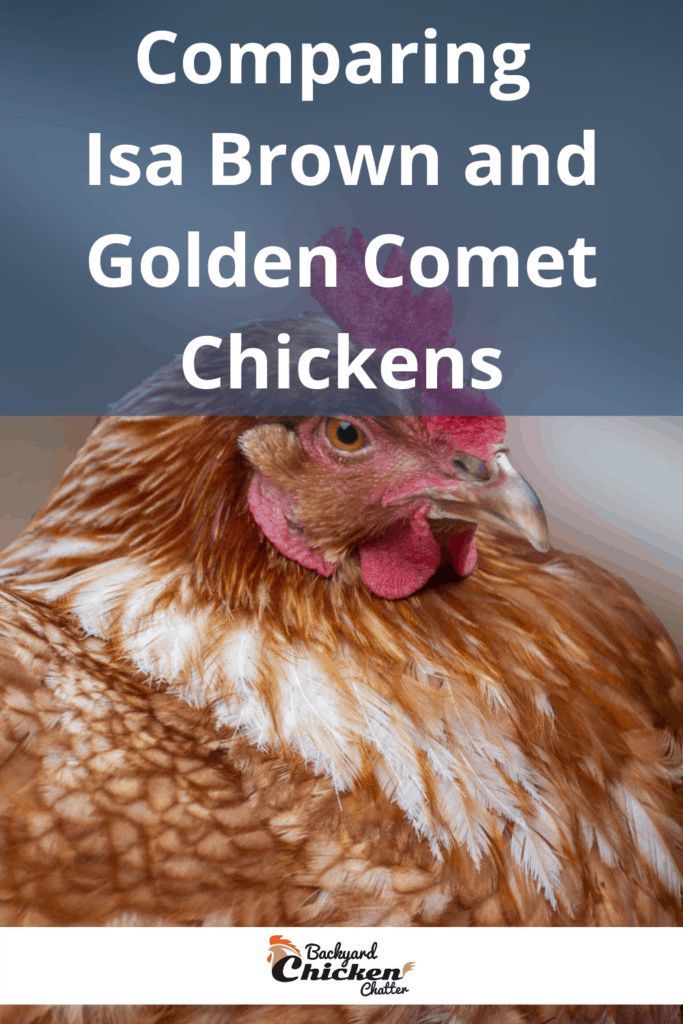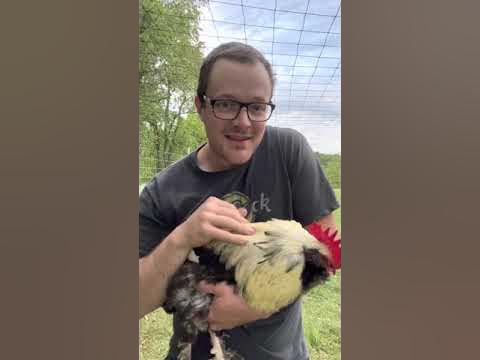Delaware roosters are larger and more vibrant than hens, boasting flowing tail feathers and pronounced combs. Hens are smaller, with subtler coloring and function primarily as egg layers.
Understanding the differences between Delaware roosters and hens is essential for poultry enthusiasts and farmers. Delaware chickens, a dual-purpose breed known for their meat and egg-laying capabilities, display distinct sexual dimorphism. This means males and females exhibit different physical characteristics beyond just their reproductive organs.
Roosters typically have a more striking appearance, with their larger bodies and showy plumage designed to attract mates and deter predators. Their comb and wattles are also larger and brighter, signaling their vitality. In contrast, Delaware hens are more modest in their appearance, prioritizing function over form as they contribute to egg production on the farm. Recognizing these differences plays a crucial role in managing a healthy and productive flock.
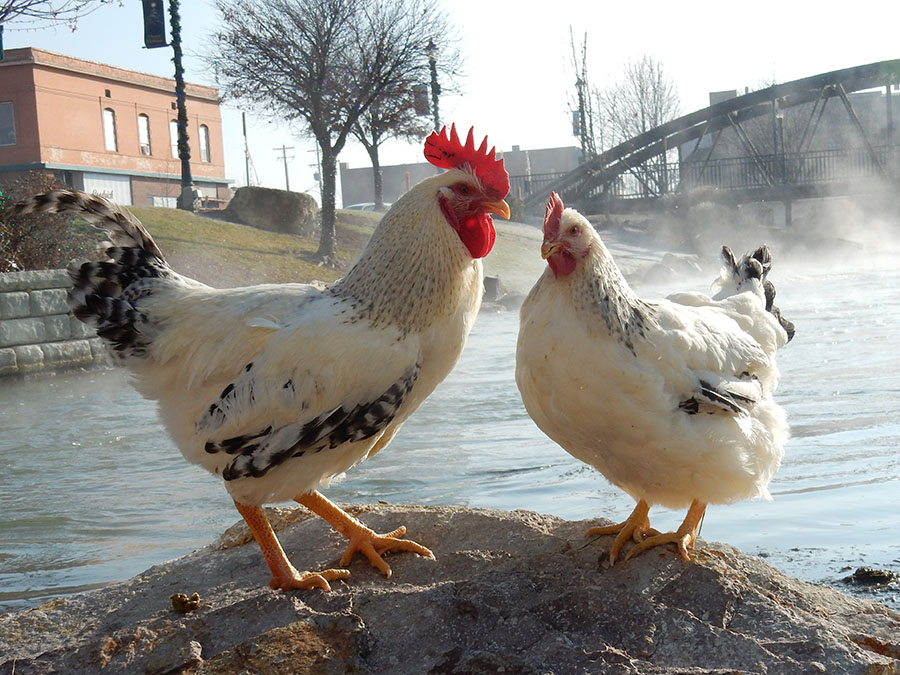
Credit: www.dunlaphatcherypoultry.com
Introduction To Delaware Poultry
The Delaware chicken is a classic American breed. Known for its distinctive black and white feathers, it’s a favorite among poultry enthusiasts. Whether in a small backyard coop or on a larger farm, the Delaware presents unique qualities that make it stand out from other chicken breeds. Let’s explore the origins of this bird and its place in the world of farming.
Origins Of The Delaware Chicken
The Delaware chicken emerged in the 1940s. It was first bred in the United States. A mix of New Hampshire Reds and Barred Plymouth Rocks created this interesting bird. The aim was to produce an excellent broiler chicken. The breed quickly gained fame for its rapid growth and quality meat.
Significance In Farming
Farmers value the Delaware chicken for several reasons. Not only do they grow quickly, but they also provide a substantial amount of meat. Hens are also known for being great egg-layers. Here is a breakdown of the bird’s farming significance:
- Dual-purpose: Suitable for both eggs and meat production.
- Good Temperament: Delawares are generally friendly, making them easier to manage.
- Cold Hardy: They adapt well to cooler climates, ensuring year-round farming.
This breed has become a symbol of efficiency in poultry farming, perfect for those seeking a hardy bird that excels in both egg and meat production.
Physical Characteristics
Understanding the physical characteristics of Delaware poultry is vital. Whether you’re a seasoned farmer, a backyard chicken enthusiast, or simply curious about these birds, distinguishing between a Delaware rooster and hen can be surprisingly fascinating.
Plumage And Size Differences
The Delaware breed showcases striking plumage that sets them apart. The roosters and hens both feature a primarily white body. Yet, the bold black barring on the hackles and tails differ between the sexes.
- Rosetters tend to have more prominent markings than hens.
- Roosters are larger and more robust, while hens are smaller with a more streamlined silhouette.
| Gender | Average Weight |
|---|---|
| Rooster | 8.5 lbs |
| Hen | 6.5 lbs |
This size difference is evident as roosters grow to a heftier weight compared to hens. Their broader shoulders and larger combs give them a commanding presence.
Distinctive Features Of Roosters And Hens
Delaware roosters flaunt certain traits that are not found in hens. Their longer, curved tail feathers, known as sickle feathers, are a standout feature.
- The rooster’s comb is typically more pronounced and vividly red.
- Roosters have thicker legs and larger spurs, distinguishing them further from their female counterparts.
- Hens exhibit smaller wattles and combs, which are less flashy than those of roosters.
Behavioral Traits
Delving into the behavioral traits of Delaware chickens, a clear distinction emerges between roosters and hens. Understanding these differences is crucial for chicken enthusiasts and farmers alike. Let’s explore how these birds behave and interact within their environment.
Temperament And Social Structure
Delaware roosters and hens showcase unique temperaments that affect their social dynamics. Observing these behaviors helps us better integrate them into the coop.
- Roosters often stand as the flock’s protectors. They show bravery and can become aggressive if they sense a threat.
- Hens are generally more docile, focusing on laying eggs and nurturing chicks.
The social structure is clear: roosters lead and hens often follow. Roosters assert dominance through pecking order, securing top rank in the flock’s hierarchy.
Rooster Crowing And Hen Clucking Patterns
Communication in Delaware chickens is vibrant and distinctive, with roosters and hens using their voices in different ways.
| Rooster Crowing | Hen Clucking |
|---|---|
| Signals territory and dawn, often heard at sunrise | Indicates laying of eggs or social talks with chicks |
| A sign of alert when predators are near | Soft clucks mean contentment; loud alerts signal distress |
Rooster crowing serves multiple purposes, from keeping the flock in line to warning of dangers. Hens cluck to communicate with their brood and express their needs or concerns.
Role In The Flock
Understanding the unique duties of Delaware roosters and hens is crucial for a thriving flock. Each bird plays a vital part ensuring a balanced, productive, and safe chicken community. Let’s dive into their specific roles under the watchful eyes of the farmer.
Roosters As Protectors
Delaware roosters take the flock’s safety seriously. Strong and alert, they keep a watchful eye for predators. A rooster’s crow can signal danger and gather the hens to safety. They often take the highest vantage point, overseeing their territory.
- Constant vigilance: Scans the area for threats
- Leadership: Guides and organizes the flock
- Defense: Fends off predators bravely
Hens’ Contribution To Egg Production
Delaware hens are the heart of egg-laying within the flock. They are prolific layers, contributing to the farm’s sustainability. Each hen has a nesting box where she lays eggs almost daily. The hens’ nurturing nature also ensures the next generation is well cared for.
| Egg-Laying Cycle | Care Duties |
|---|---|
| Daily egg-laying | Incubate eggs constantly |
| Regular nest use | Raise chicks tenderly |
Consistent production: Hens reliably lay quality eggs. Nest maintenance: They keep nest areas clean and comfortable. The eggs stay safe until collection or hatching.
Life Cycle And Reproduction
Understanding the life cycle and reproduction of Delaware chickens is captivating. The journey from egg to adult is filled with distinct stages. This post explores how Delaware roosters and hens participate in the creation of new life.
Mating Rituals
Delaware roosters perform unique courtship dances to attract hens. They exhibit impressive displays of feathers and strength. Observing these rituals offers insight into their natural behavior. The following points describe common mating behaviors:
- Wing Dragging: The rooster lowers one wing and dances in a circle.
- Crowing: It signals readiness to mate and asserts dominance.
- Tidbitting: Roosters peck at the ground, simulating food discovery.
Brooding And Raising Chicks
Hens show a strong inclination to nurture and protect their eggs until hatching. The brooding phase lasts about 21 days. Here’s how hens manage this task:
- Incubation: The hen provides warmth and rotates the eggs periodically.
- Hatching: Chicks emerge using their egg teeth to break the shell.
- Rearing: Mother hens guide the chicks in feeding and avoiding danger.
Once chicks are born, both parents play roles in their upbringing. Observing these dynamic interactions provides deep insight into the fascinating life cycle of Delaware chickens.
Economic Value
When choosing poultry for farming, economic value is a crucial consideration. Different breeds offer different benefits. Comparing Delaware roosters and hens sheds light on their respective economic advantages. Discover which bird aligns with your farming goals.
Meat Production Qualities
The Delaware breed originates from the United States. Known for its rapid growth, the Delaware rooster stands out in meat production. This breed features a broad breast, sizable thighs, and overall plumpness, ideal traits for meat.
| Characteristic | Delaware Rooster | Delaware Hen |
|---|---|---|
| Size | Larger | Smaller |
| Growth Rate | Faster | Slower |
| Meat Yield | High | Lower |
Farmers favor Delaware roosters for meat due to their economical feed-to-meat conversion ratio and desirable carcass quality.
Egg Laying Capacity And Quality
In contrast to roosters, Delaware hens contribute significantly to egg production. Their eggs are large, with a brownish shell, and they produce consistently.
- Annual Egg Count – each hen lays approximately 200-280 eggs.
- Egg Size – large.
- Egg Color – brown.
Delaware hens exhibit good laying persistency, making them a valuable asset for continuous egg supply.
Their ability to lay well even in colder months is an advantage for year-round production.
Health And Wellness
Keeping Delaware chickens healthy is key for a thriving flock. A strong rooster and hen mean better egg production and quality poultry meat. Yet Delawares can face health issues, like any breed. This section will explore common ailments and nutrition tips for these birds.
Common Ailments In Delaware Chickens
Delaware chickens are hardy birds but can get sick. Here are some illnesses they might catch:
- Marek’s Disease – A viral disease affecting nerves.
- Respiratory Illnesses – Cough and sneeze signs.
- Parasites – Lice and mites can harm skin and feathers.
- Fowl Cholera – A bacterial disease causing joint pain.
Diet And Nutrition
A balanced diet helps Delaware chickens stay fit. Look at their needs:
| Nutrient | Benefit |
|---|---|
| Protein | Builds muscle and feathers. |
| Calcium | For strong eggs and bones. |
| Vitamins | Keeps the immune system healthy. |
| Carbohydrates | Gives energy for daily activities. |
Ensure their food is fresh and clean water is always available.

Credit: www.backyardchickens.com
Conservation And Heritage Status
Delaware chickens, once common on American farms, now face dwindling numbers. Conservation and heritage status for Delawares highlight the need to protect this breed. Let’s delve into efforts underway to safeguard the future of both Delaware roosters and hens.
Conservation Efforts
Organizations and poultry enthusiasts are pivotal in the push for conservation. They undertake activities such as:
- Backyard breeding programs: Encourage the growth of Delaware populations.
- Educational outreach: Raises awareness about the breed’s status.
- Genetic preservation: Banks genetic material for future diversity.
These strategies aim to increase Delaware numbers and uphold genetic strength.
Heritage Breed Designation And Importance
The Delaware chicken holds a “Heritage” breed designation. This status is vital because:
- It recognizes: The breed’s contribution to agriculture history.
- It prioritizes: Their conservation in farming practices.
- It emphasizes: Sustainable farming with traditional breeds.
Heritage breeds, like the Delaware, are important for biodiversity and offer a bank of unique traits that can enhance poultry stocks.
Choosing Between A Rooster And A Hen
When it’s time to add to your backyard coop, deciding between a Delaware rooster and hen is crucial. Each has distinct roles in a flock. Let’s dive into making a choice that suits your needs.
Considerations For Backyard Flocks
Delaware chickens are known for their dual-purpose abilities, offering both eggs and meat. But choosing the gender that fits best within your coop grounds in several considerations.
- Flock Dynamics: Roosters provide order, protection, and can facilitate breeding.
- Egg Production: Hens are valuable for their consistent egg laying.
- Noise Level: Roosters crow, which can be loud, while hens are quieter.
- Behavior: Understanding that roosters can be more aggressive is important.
Legal Restrictions And Neighbour Considerations
Legal restrictions can influence your options between a rooster and a hen.
- Zoning Laws: Some areas forbid roosters due to noise. Check local ordinances first.
- Neighbour Preferences: It’s considerate to consult neighbours about potential crowing.
Keeping peace with neighbours maintains community harmony. A good relationship is beneficial.
Care And Management
When caring for Delaware Roosters and Hens, their overall well-being hinges upon proper housing and safety measures.
Housing Requirements
Appropriate shelter ensures healthy and happy birds.
- Space: Provide at least 3-4 square feet per bird inside the coop.
- Ventilation: Good air flow without drafts is crucial.
- Nesting: Allocate nesting boxes; one for every 4-5 hens.
- Perches: Enough roosting space to prevent overcrowding at night.
Durable materials protect from harsh weather.
Keep the coop clean and dry to prevent disease.
Protection From Predators
Predators can be a serious threat to your flock.
- Secure Fencing: Use hardware cloth, not chicken wire, for defense.
- Cover: A wire roof or netting prevents aerial attacks.
- Locks: Install predator-proof latches on doors and windows.
- Checks: Regularly inspect for signs of digging or tampering.
Consider guard animals like dogs or geese for added security.
Nighttime: Ensure chickens are locked in, as most predators hunt at night.
Breeding Strategies
Welcome to the fascinating world of poultry breeding, specifically focusing on Delaware chickens. Distinguishing between the robust Delaware rooster and the diligent hen is just the beginning. To achieve desirable characteristics in their flocks, breeders employ a variety of strategic breeding techniques.
Selective Breeding For Traits
When breeders aim to enhance certain traits in Delaware chickens, they turn to selective breeding. This process involves choosing roosters and hens that exhibit desirable characteristics. Successful breeders often look for qualities like:
- Large size for meat production
- High egg yield for those keen on egg-laying efficiency
- Temperament, targeting a calm and friendly flock
- Disease resistance, crucial for a healthy brood
Selective breeding requires careful monitoring and documentation of each bird’s lineage and attributes. Breeders often keep detailed records to ensure their decisions are well-informed and beneficial to the flock’s development.
Maintaining Genetic Diversity
Maintaining a diverse gene pool is essential for the health and vitality of Delaware chickens. A limited gene pool can lead to inbreeding, which often results in:
- Reduced fertility
- More health problems
- Decreased survival rates in chicks
Strategies to preserve genetic diversity include:
- Introducing new bloodlines periodically
- Practicing outcrossing with unrelated birds
- Ensuring varied mating pairs within the flock
This approach not only safeguards the flock’s future but also keeps the breed’s unique characteristics intact for generations to come.
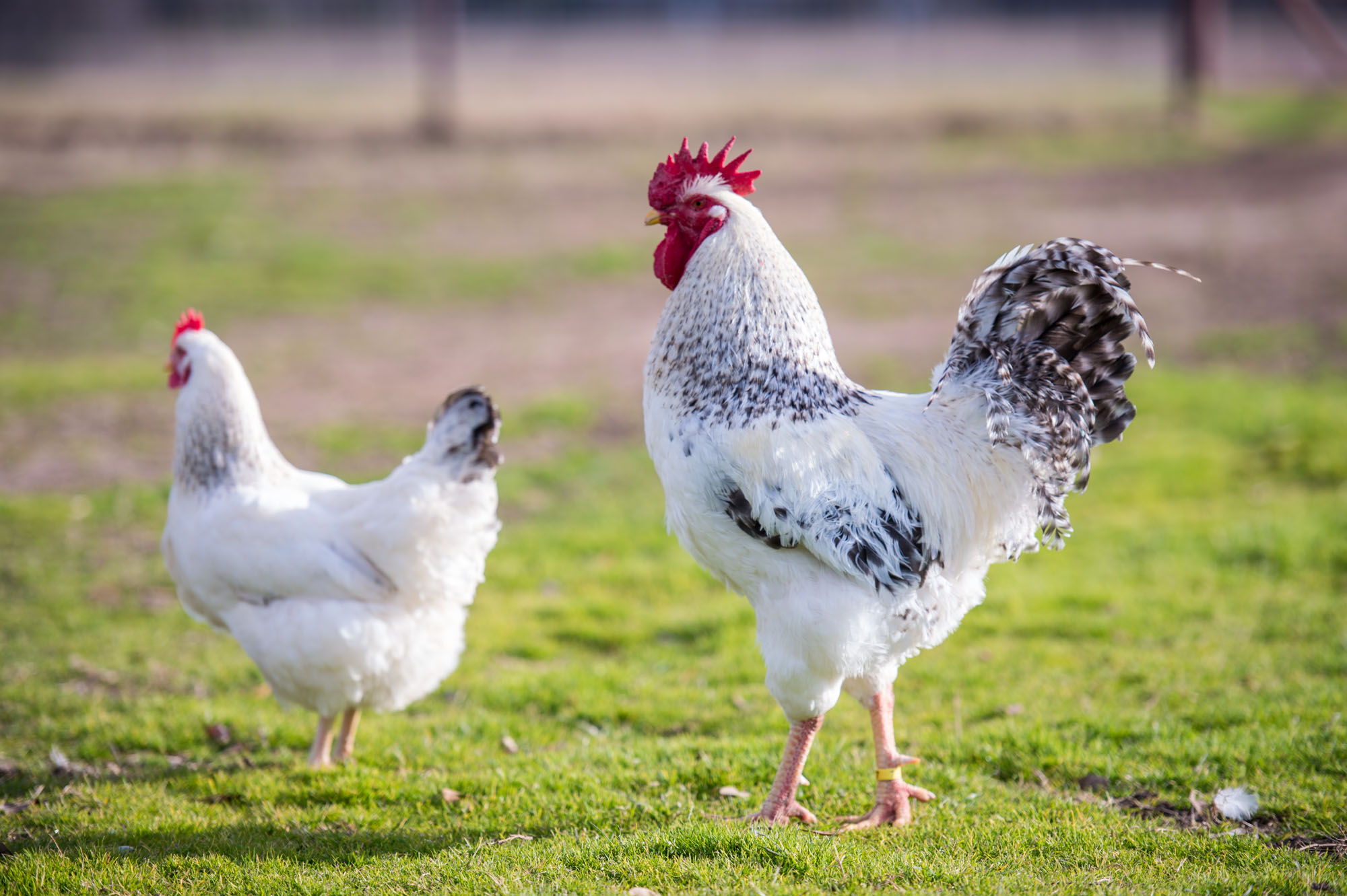
Credit: www.heritagepullets.com
Future Of Delaware Chickens
The Delaware chicken, a breed known for its dual-purpose qualities, faces a pivotal moment in its future. Once at the brink of obscurity, the breed has seen a resurgence in popularity. This is due, in part, to its excellent meat and egg production. It’s a key moment to examine the Delaware rooster and hen and their role in the future of poultry.
Breeder Community Trends
The breeder community strongly impacts the future of the Delaware chicken. Breeders are embracing the Delaware for its gentle nature and hardy constitution. In recent years, a trend has emerged: heritage breeds like the Delaware gain attention.
- Increased participation in heritage breed conservancies
- Enhanced online presence, creating networks for breeders
- More educational resources about the breed’s advantages
Potential As A Sustainable Poultry Breed
The Delaware chicken’s potential as a sustainable breed is becoming increasingly recognized. Its ability to thrive in diverse environments and climates makes it a top choice for farmers.
| Attribute | Benefit |
|---|---|
| Efficient food converters | Less feed needed for production |
| Good layer and meat producer | Reduces need for multiple breeds |
| Adaptable to free range | Supports organic farming practices |
The breed’s robust health and low maintenance need gain it favor among small-scale and backyard farmers. It’s a clear choice for those seeking a self-reliant homestead or contributing to local food systems.
Conclusion
Distinguishing between Delaware roosters and hens enriches your poultry knowledge. Each bird plays its part in farm dynamics, with unique traits and behaviors. Whether you’re a seasoned farmer or a backyard enthusiast, appreciating these differences ensures a harmonious flock. Embrace the diversity of your Delaware chickens and enjoy their distinct contributions to your homestead.
